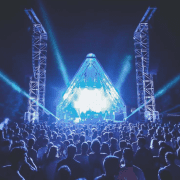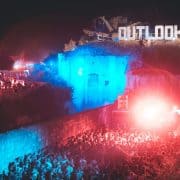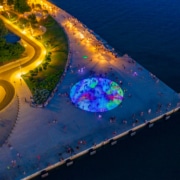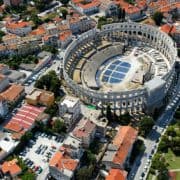Spotlight on: The Arena, Pula
The stunning Arena in Pula is one of the most magical sights in all of Croatia. This three-story (on its largest side) Roman amphitheatre is the sixth-largest amphitheatre in the world but – with all four sides intact – it is the best-preserved amphitheatre. Imagine that! Read on for more details about this ancient gem in Pula, how to visit it and what to see there.

Getting There
The Arena is located in the northeastern part of Pula, a short distance from the sea. Take a look at our Getting to Istria page for details of flights to Pula Airport, and then out Getting to and from Pula Airport for how to get to the city itself.
The Arena is actually a short walk (no more than 15 minutes) from the bus station and a similar distance from the train station. It is also very close to the port in Pula, should you be making your way to the city by boat.
You can also take a local city bus to the Arena – buses 4, 5a, 8, 9 and 71 go past this wonderful building.
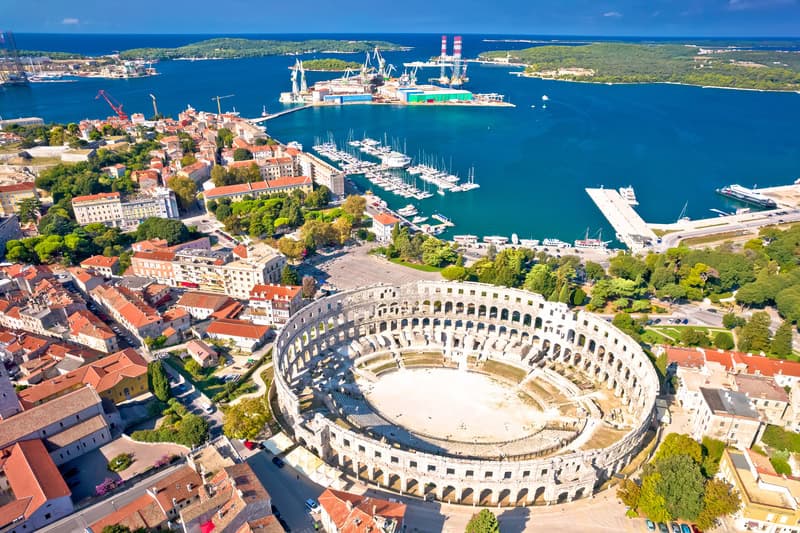
About The Arena and Its History
The Arena was built in several stages or iterations during the rule of several different Roman Emperors between 27 BC and 68 AD. The foundations of the first amphitheatre were built during the time of Emperor Augustus. This was extended during the reign of Emperor Claudius and completed under the reign of Emperor Vespasian. At the time of its construction, Pula – then called Pietas Iulia – was the centre of Roman rule in this part of the Empire; the Arena was built just outside the Town Walls.
The Arena is named after the Latin word for sand (harena) which is what the floor of the central part would have been covered in. Its external walls are made from limestone.
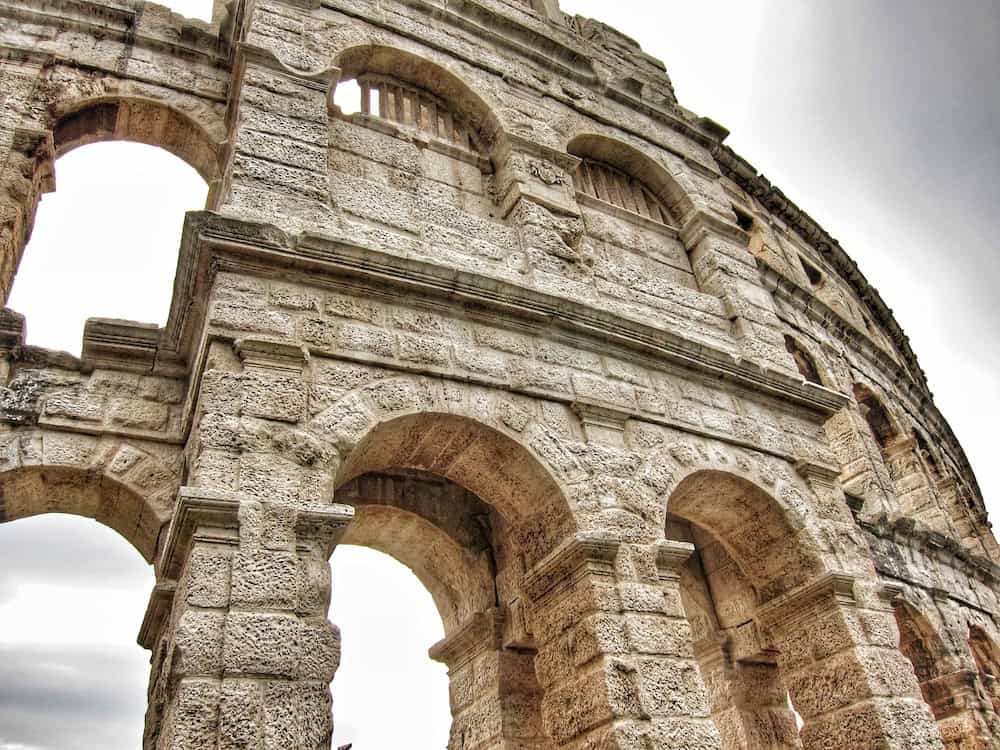
During its use in Roman times, it would have held up to 23,000 spectators. These days, about 5,000 people usually attend events held here. Back in those Roman times, the amphitheatre was used for what you can expect – gladiatorial fights and other entertainment occasions, as well as being a place for social meetings.
Gladiatorial fights were banned in the 5th century and the Arena subsequently became used for a cattle market. In that same century, parts of the stone of the structure began to be used as a source of building materials for the local area although this practice was stopped in the 13th century.
In the 16th century, the Venetian Senate proposed to dismantle the amphitheatre in its entirety and rebuild it in Venice although this was (thankfully!) prevented by Sentator Gabriele Emo. A plaque in tribute to him was placed on the northwestern tower.
The restoration of the Arena began in the 19th century.
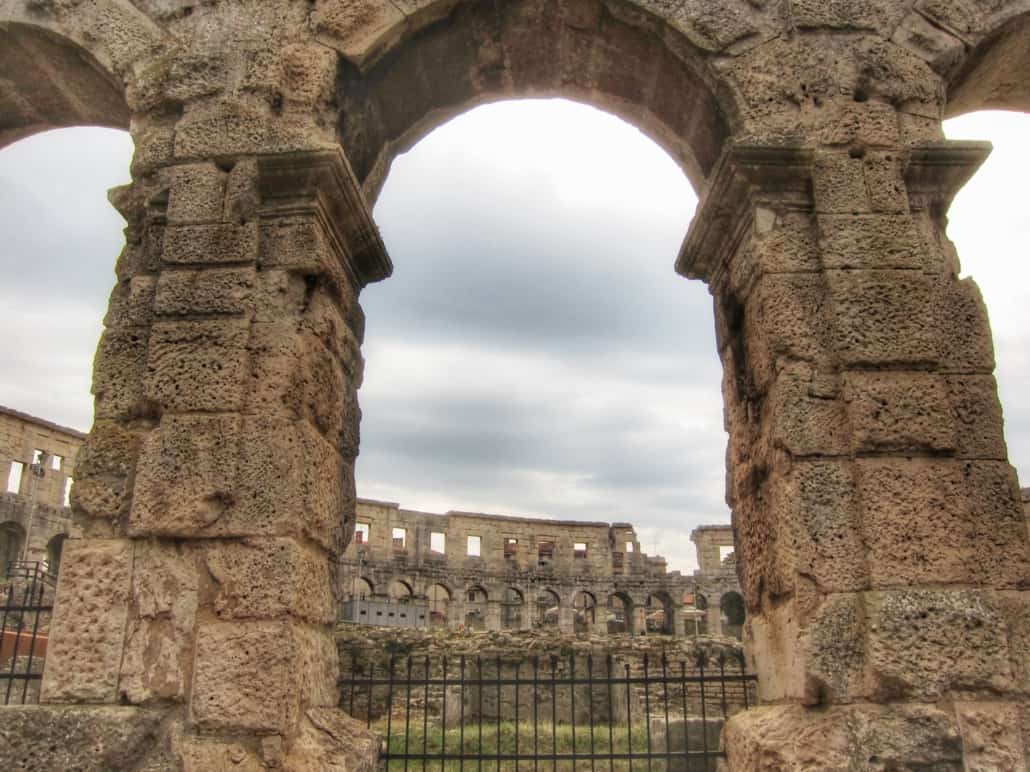
Features of The Arena
The oval-shaped Arena stands just over 32 metres high, stretching out over an area of about 132 metres wide and 105 metres deep. The central part – where Roman entertainment would have taken place – measures 68 metres by 41 metres. One side of the amphitheatre, the one closest to the Adriatic Sea, has three visible stories (plus a fourth foundation story) whilst the other three sides have two. This is because the Arena is built on a natural slope.
Built in limestone, the two lower stories contain 72 arches whilst the top story is made up of 67 square windows with a cornice feature placed on top. There are four rectangular towers set within the walls which strengthened them; these towers contained water reservoirs.
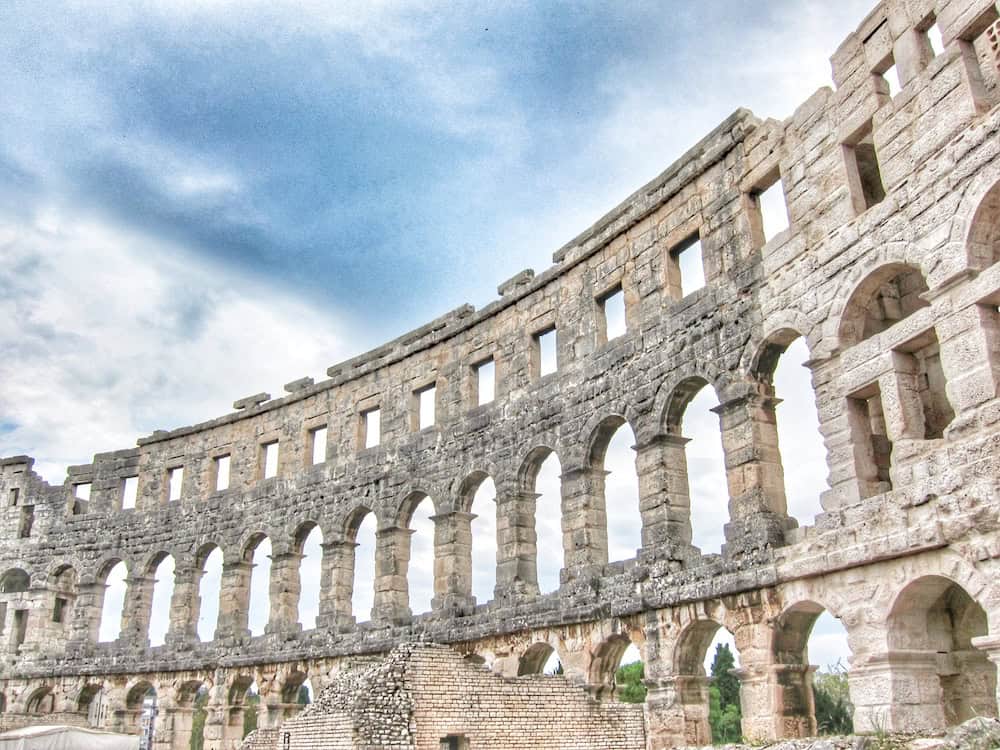
Below the main Arena floor were constructed a series of chambers for storing animals and passageways to lead them and gladiators up to the Arena.
Perhaps surprisingly, the Arena could have been covered up in the case of bad weather through a series of pulleys and ropes attached to wooden masts that would pull sails over the roof.
Opening Hours and Entrance Price
The Arena is open year-round with extended opening hours – usually until 10pm – in the summer months.
Entry costs €10 for adults and €5 for children.
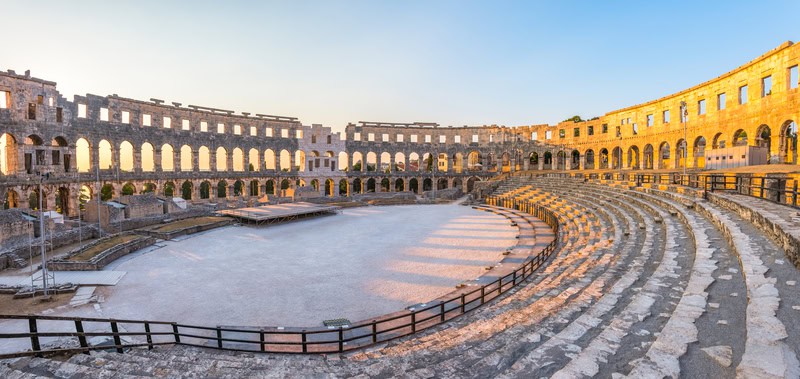
What to See and Do at The Arena
Stroll through the Arena and really get a feel for what it must have been like back in Roman times. Unlike, say, the Colosseum in Rome, you can have an uninterrupted stroll right through the centre of this amphitheatre. At times, it almost feels like quite an intimate venue…but then imagine standing in the centre and being watched by 23,000 people!
Take yourself up to the seating levels where you can and now imagine yourself as a Roman spectator. Entry to the Arena was free back in those days but a seating system based on social class would have existed…so make sure you sit in the “best seats”. Whilst you’re up on this level, do also peer out of the Arena.
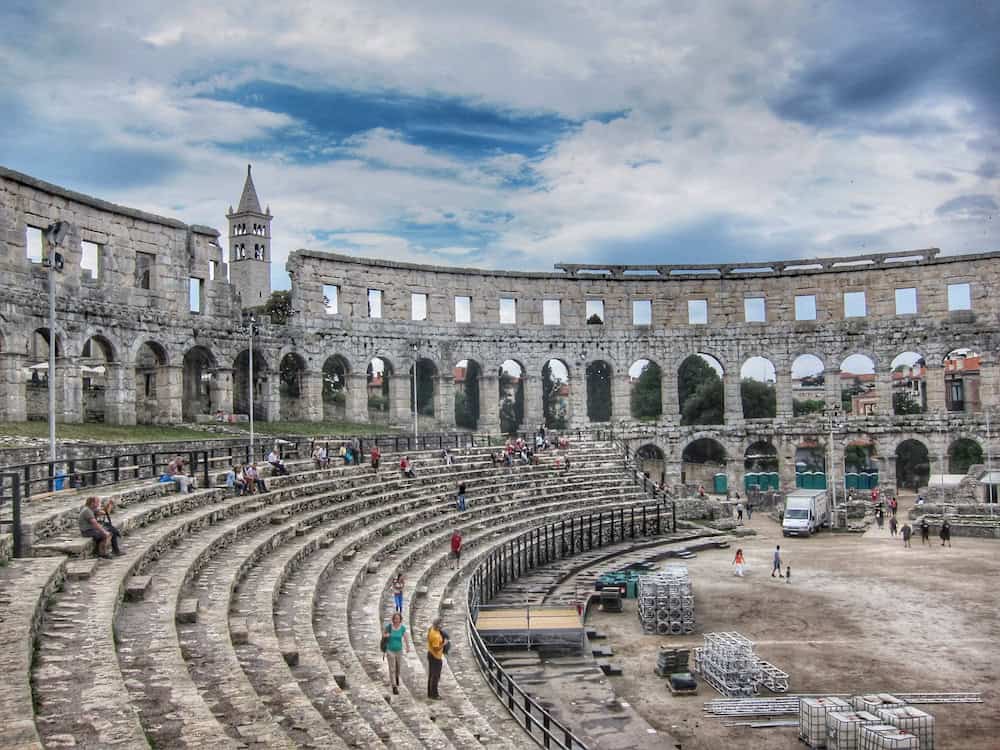
Head down below ground to walk through the passageways and chambers. Here, you will find an exhibition on viticulture and olive oil production in Istria during Roman times with a particular focus on how oil was derived from olives in those times.
There is also a large collection of well-preserved Roman amphorae, which were used for transporting liquids.
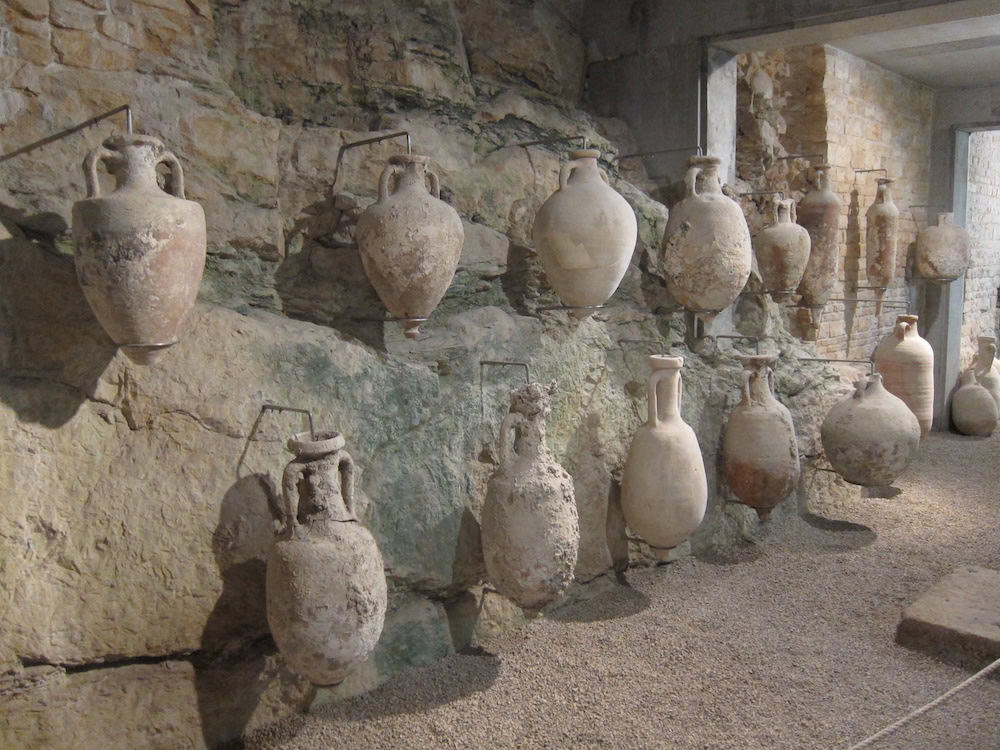
Do be sure to also spend some time walking around the outside of the Arena to fully realise the magnificence of this large, wonderfully preserved Roman structure.
There are no guided tours for the Arena itself once you are inside. You may like instead to join a guided walking tour of Pula – as shown below – which includes entry to the Arena:
Other Ways of Seeing and Enjoying The Arena
These days, the Arena is often used as a concert and entertainment venue in the summer months, and there’s something rather special about enjoying this kind of experience in such a historic venue. Perhaps most famously, the Arena is used as a venue during the Pula Film Festival which takes place every July. In 2024, the 71st edition of the festival will take place meaning it is the oldest film festival in Croatia.
There are also numerous concerts held in the Arena in the summer. For example, in 2024, Dua Lipa, Avril Lavigne, Simple Minds, Lenny Kravitz and Duran Duran will all be performing there. Previous performers over the years have included Sting, Elton John, The Foo Fighters and Luciano Pavarotti. One-off sporting events are also sometimes held here.
Special opening night events of some of Croatia’s music festivals – such as Outlook – have also previously been held here in the past when such festivals were held in the Pula region.
Summer also sees the regular Spectacula Antiqua gladiatorial and Roman reenactments take place. Just the thing to take you back all those many centuries ago!
More info
You can learn more about the Arena on the Archeological Museums of Istria website.


